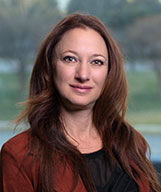Summer Learning: For Students Only?
Learn More About LETRS
You hear the final school bell ring and that can only mean one thing…It’s summertime. I can picture it now. Waking up late, drinking coffee until noon, taking beachside vacations, and spending that extra needed time with family and friends. Now, let’s face the facts, we’re teachers. That’s where our reality sets in. We may enjoy those things the first few weeks, but we can’t help our minds from beginning to plan for the upcoming school year, only a few short months away.
We all have heard of the summer slide, the academic regression experienced by students during the summer, which occurs for many of our students. We send home tips and tricks to parents and reinforce to students to keep reading throughout the summer months to better prepare them for the next grade. While this is all great: What about teachers? Do we experience the same slide during the summer months when we are not teaching every day? Here are some ways we can avoid our own summer slide.
- Book study
Gather a few colleagues and create a summer book club. Think about the common struggles you face in the classroom and where you can enhance your own knowledge base. Create guiding questions to discuss after each chapter and turn those discussions into actions in your own classroom. One of my favorite books right now is, Visible Learning for Literacy, written by Fisher, D., Frey, N., Hattie, J. The authors, Fisher, Frey, & Hattie (2016) show you:
- How to use the right approach at the right time, so you can more intentionally design classroom experiences that hit the surface, deep, and transfer phases of learning.
- Which routines are most effective during these specific phases of learning, including word sorts, concept mapping, close reading, annotating, feedback, collaborative learning, reciprocal teaching, and more.
- Why the 10 mind frames for teachers apply so well to curriculum planning and can inspire you to be a change agent in students’ lives and part of a faculty that understands that visible teaching is the result of a continual, daily assessment of one’s impact on student learning.
- Create a sound wall
You may be thinking, a sound wall, what happened to the ever popular word wall? Here are a few facts behind this shift:
- Twenty-six letters in the alphabet (what we use for word walls), however there are 44 speech sounds we teach our students.
- Sound walls are used to teach letter-sound correspondence, not initial letter, like the way a word wall functions.
- Focuses on articulation of the sounds.
- The need to map sounds to print.
- Guides instruction on attaching phonemes to orthographic (spelling) patterns.
Here are a few examples of some letters that carry multiple sound spellings:
i k j s i_e c gi _s ie k ge ce igh ck gi ci _y _ch _dge cy Now for the fun part, creating your new sound board. According to Mary Dahlgren, Ed.D., literacy consultant and National LETRS® (Language Essentials for Teachers of Reading and Spelling) trainer, sound walls should be set up by the articulation of speech sounds, starting with the sounds you make from the front of your mouth to the back of your throat. She also suggests adding articulation pictures next to each sound card so students can see the proper mouth formation when producing each sound. This leads me into the third way we can reduce the summer slide within ourselves.
- Professional development
What better time to continue our own education then during the summer months, when our plates are not as full with the day-to-day responsibilities of our classroom. Engage in an effective professional development course that furthers your learning in areas your students struggle with. This will not only enhance your own skills, but will have a positive impact on student achievement. Do you know what a phoneme is? Or a grapheme? Or even orthographic patterns? My confusion with all of these terms once had me questioning if I truly had the knowledge I needed to teach my students how to read. It wasn’t until I dedicated time to learn the science behind teaching children how to read that I felt confident I was providing all of my students with the proper strategies they needed to become proficient readers. Have you already been through a deep study of reading instruction? If so, look at opportunities beyond that, those that stretch your comfort level, since that is where change occurs.
As you embark on your summer learning, don’t forget to stop and fill your own bucket.
Join Us for Part Two of Summer Learning: For Students Only?
In the meantime, learn more about how LETRS professional development gives teachers the preparation they need to be effective at teaching reading and changes student outcomes.


